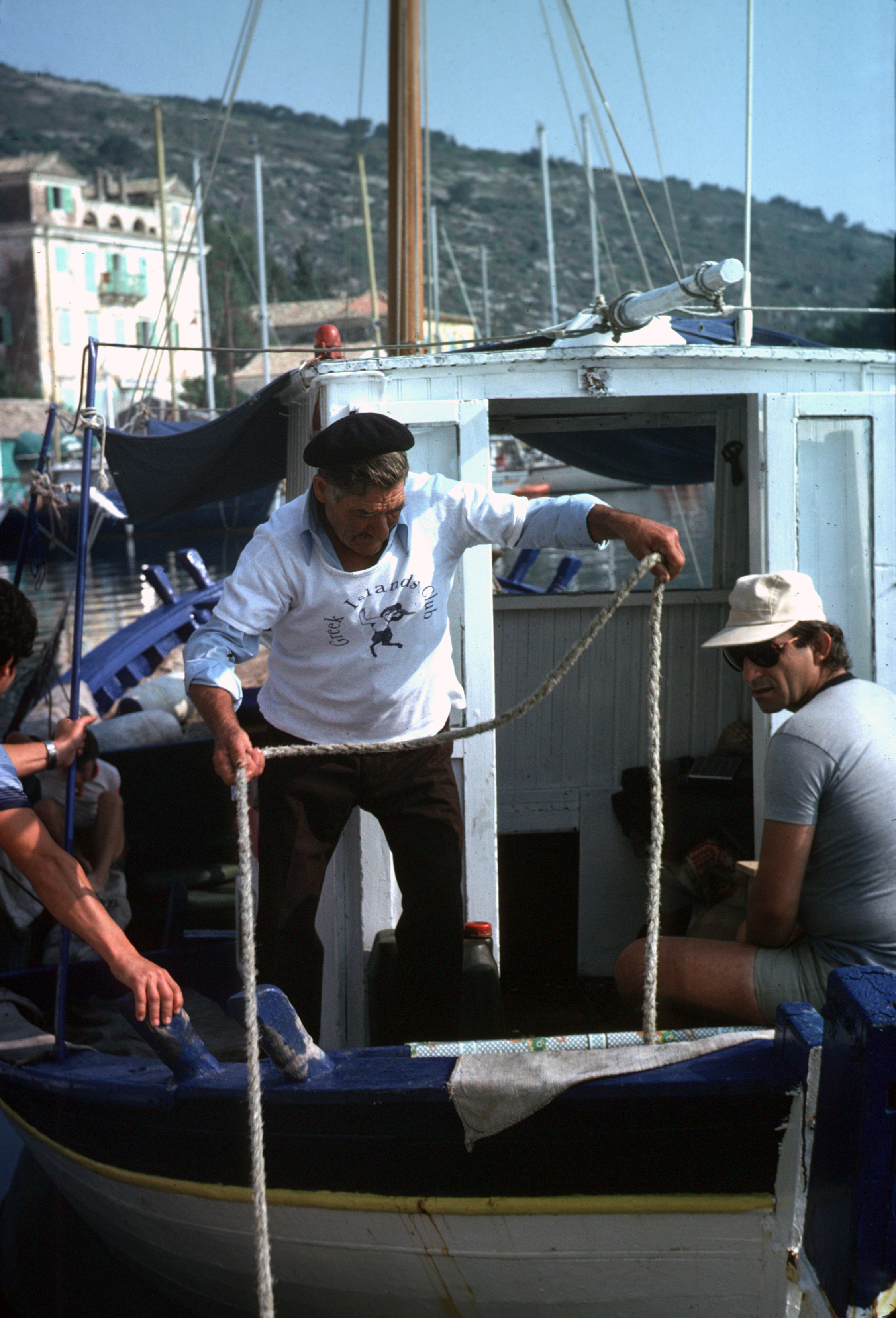The only way of getting from Corfu to Paxos in 1965, my first visit, was aboard a weather-worn, wooden caique called “Aspasia”. A central deckhouse cum cockpit provided hard bench seating for around 40 passengers. The Aspasia’s crossing time varied between 5 and 7 hours depending on the weather.
The journey south from Corfu Town, hugging Corfu’s eastern coastline until Cavos at the island’s most southerly point, is along a channel, sheltered by the coastline of the Greek mainland, and is usually comparatively calm.
In those days, Cavos was a small fishing village with just a few houses above the beach and a simple taverna run by the Roussos family. The Roussos taverna is still there but engulfed by a confloption of holiday accommodation.
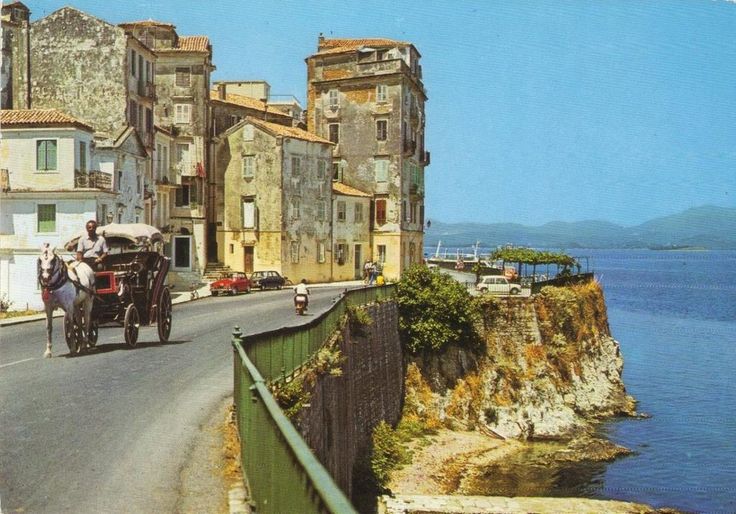
If anyone missed the Aspasia’s departure from Corfu Town’s port there was the opportunity to take a taxi to Cavos and wait for the caique to arrive there. Quite often there would be passengers plus barrels of wine waiting to board at Cavos – and on one occasion, I saw a donkey plus boxes of chickens waiting their turn.
When the Aspasia could be seen from the Cavos jetty, one or two small boats containing people, animals and provisions would be rowed out and helped up on to the waiting caique. A small man-powered winch would hoist up donkeys and barrels.

From Cavos to Paxos (around 9 miles) an afternoon swell could make the 3 – 5 hour journey seem even longer. A sudden winter storm would either cause the caique to turn back or would test the stomachs of even the hardened crew.
Despite the possibility of a rough crossing it was important to bring adequate food and drink to help you through a good part of a day. Many of the crew felt that a pack of cigarettes was ample.
The Aspasia’s single loo was a small hut on the bow deck. Facing the entrance to the hut was a wobbly bench, where 2 or 3 Paxiots would sit (usually men with worry beads while the women sat inside crossing themselves as each wave hit). I once watched an unsuspecting female passenger (a non-Paxiot like me) enter the hut just as the Aspasia left the sheltered tip of Corfu’s south east coastline and the first waves of the open sea hit the caique’s prow. The hut door swung open to the hut’s side – out of reach of the enthroned lady, with her skirt around her ankles – and in full view of the audience on the bench.
During the summer months the Aspasia would make the return journey about 3 times per week but in the winter, Paxos could be cut off for several weeks.
A large car ferry (called the “Kefalonia”), connecting Patras and Corfu and calling in at Kefalonia, would appear about half a mile offshore from Gaios on a Friday night. Small fishing boats would take Paxiots, wanting a faster journey to Corfu, out to the ferry. A large net was hung over the side of the ship and passengers would climb up and on board.
The arrival of the Kefalonia, with its lights splaying across the calm night sea, was often the highlight of the week.
I cannot remember when the first car appeared on Paxos. There were no car ferries between Corfu and Paxos in the 1960’s so island transport was boat, donkey, foot and the odd scooter.
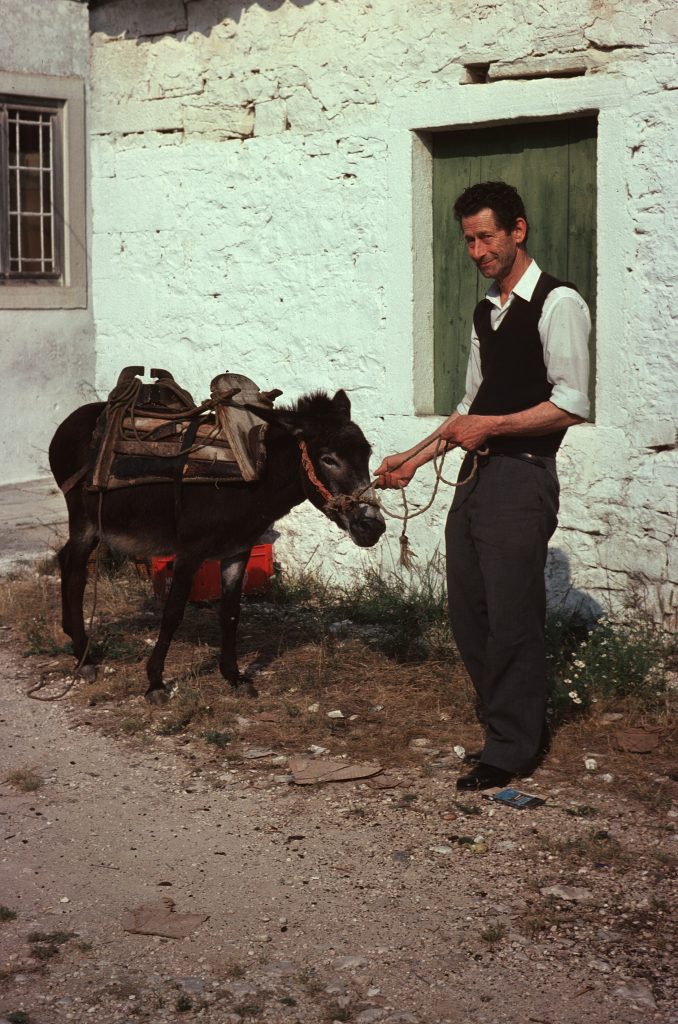
The Aspasia (and future ferries until the age of the internet) brought newspapers to Paxos to keep islanders abreast of outside news. The islanders thronged at the port when the ferry arrived – a dockers’ union (6 burly fishermen) reserved the right to offload all items (if I was carrying a suitcase, it would be snatched away and a charge made for carrying it all of 20 feet to the quayside). A bag containing the newspapers would be taken to the village’s two “periptero” (kiosks) in the main square.
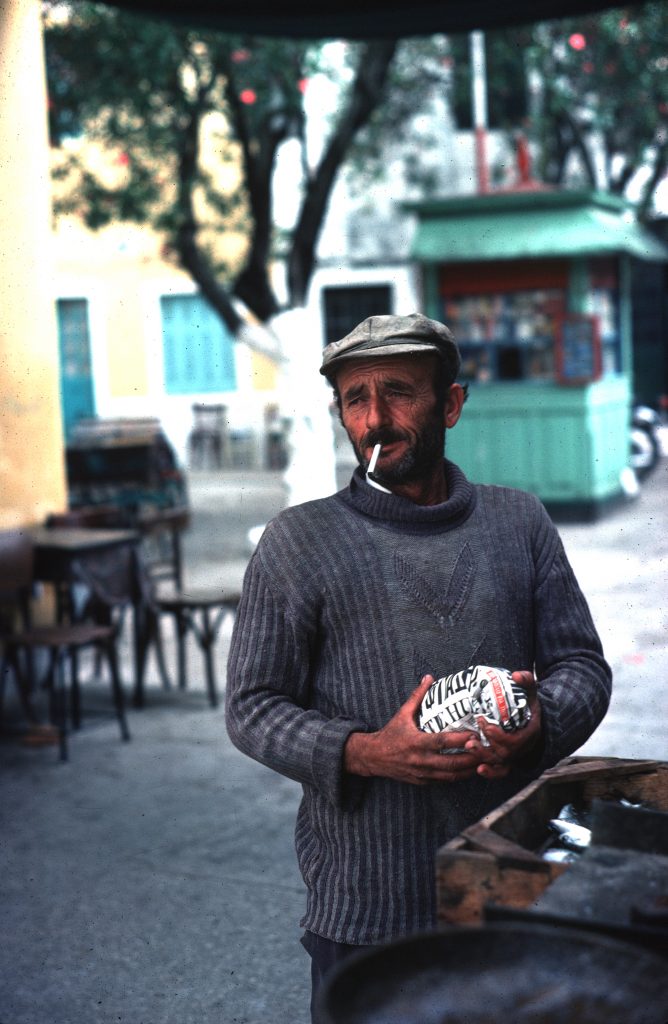
Greece was under the rule of a military junta from 1967 to 1974. All news was fervently censored to the extent that often the pages would only have a few small columns of print, leaving large empty white spaces.
In the event of bad weather and no ferry from Corfu, Paxos winters could be hard. The electricity supply (powered by diesel at the station in Gaios) would cut off sporadically if the diesel ran out. I remember fridges run on gas but no freezers (the first fridge on Paxos was bought by Peter Bull, the actor who lived on the hillside above Lakka Bay). As nothing could be frozen, the island’s staple winter diet tended to be fresh sardines and squid; soups of bean and lentil; salted cod stored in large wooden barrels and feta stored in brine. Occasionally a caique from Parga on the mainland would bring fresh fruit and vegetables to be sold on the village waterfronts.

In the 1970’s and 1980’s the ferry boat “Kamelia” started taking passengers, donkeys and cars between Paxos and Corfu. There was also the smaller “Aetos” which was just for passengers and provisions. The two ferries would depart at exactly the same time, despite being only half full, and would race each other to reach their destination. Journey time was around 2.5 hours and their rounded boat bottoms usually meant adding extra time to avoid uncomfortable rolling. The Aetos’ bottom was the roundest and would usually limp in second to the Kamelia.
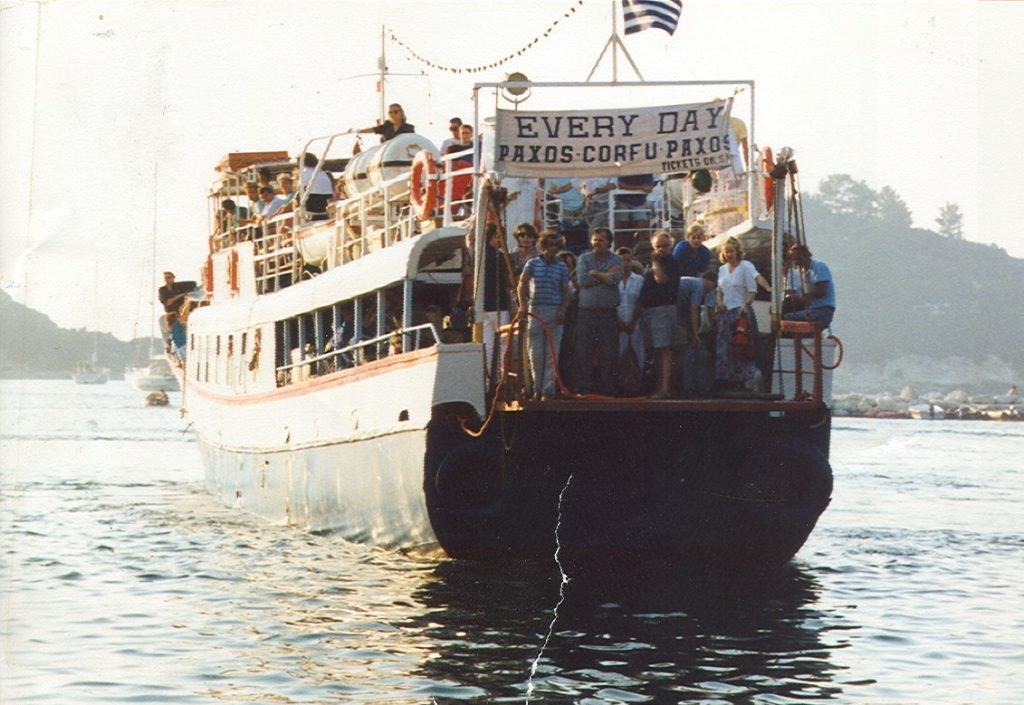
The Kamelia had room on its deck for 3 small cars, wedged in so that any late arriving passengers would have to climb over the cars. Repainting of the ferry, when there was more rust than metal, was done in spurts so that its appearance took on an oddly camouflaged look. The ship’s bar served thick Greek coffee, ouzo and cognac (recognised medicinal remedies for bad weather – together with pungent cigarettes called Stukas) and Tam-Tam (a sickly Greek version of Coca Cola).

The present day hydrofoils, fast boats and speedboats (and who knows, a possible return of the 10-minute seaplane hop) have introduced speedier communications between Paxos and Corfu. For most visitors however, life on Paxos is still led at a comparatively slow pace and long may that continue.

